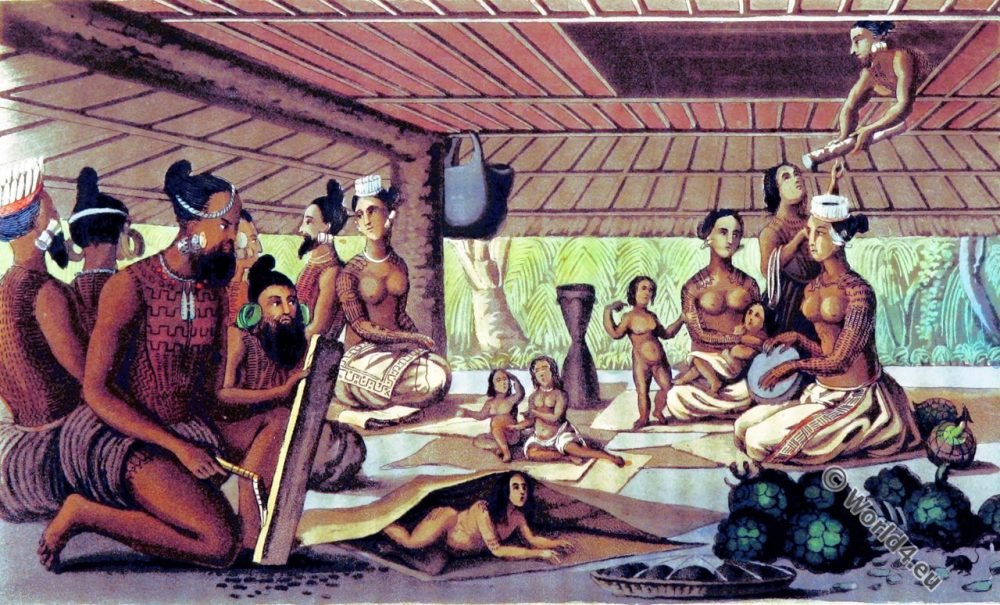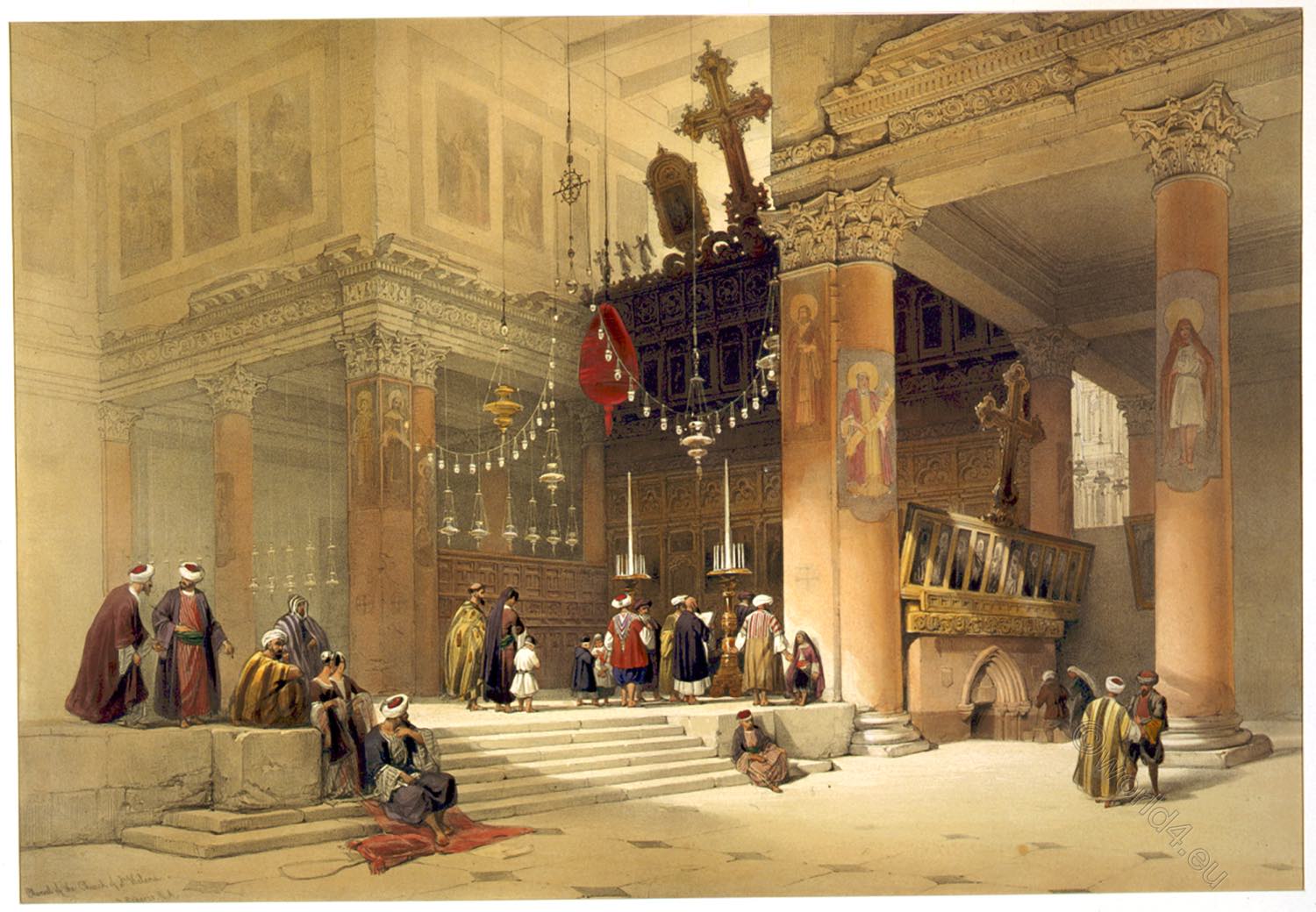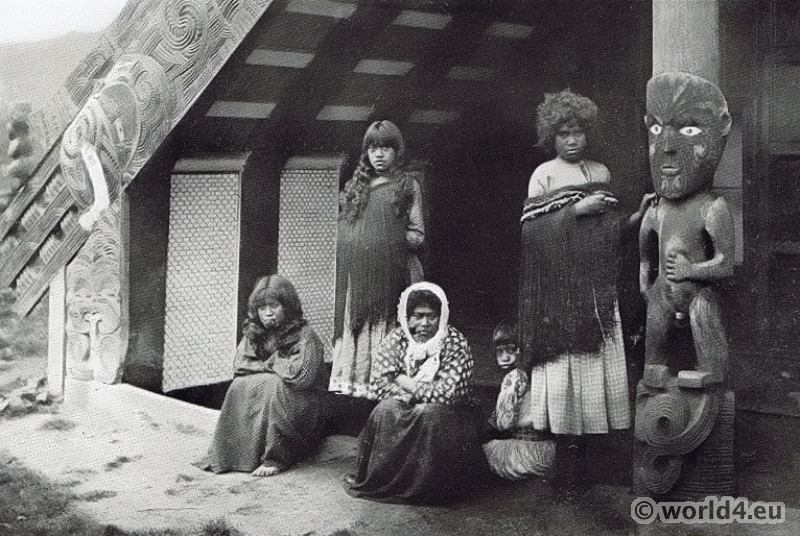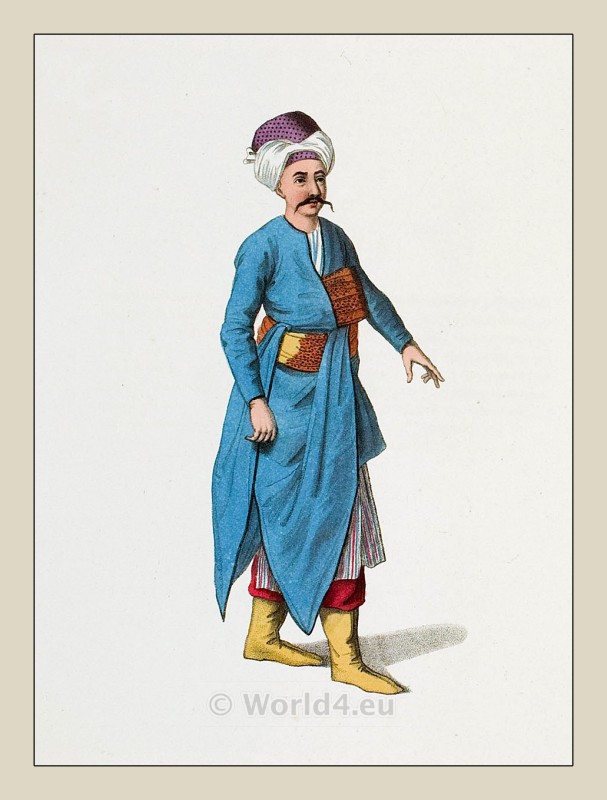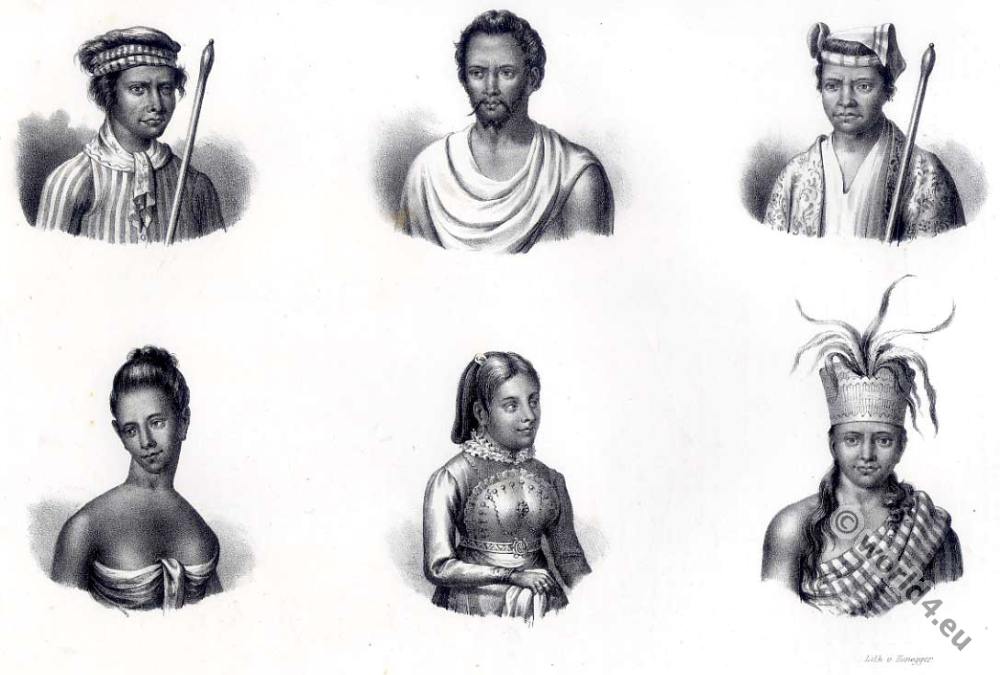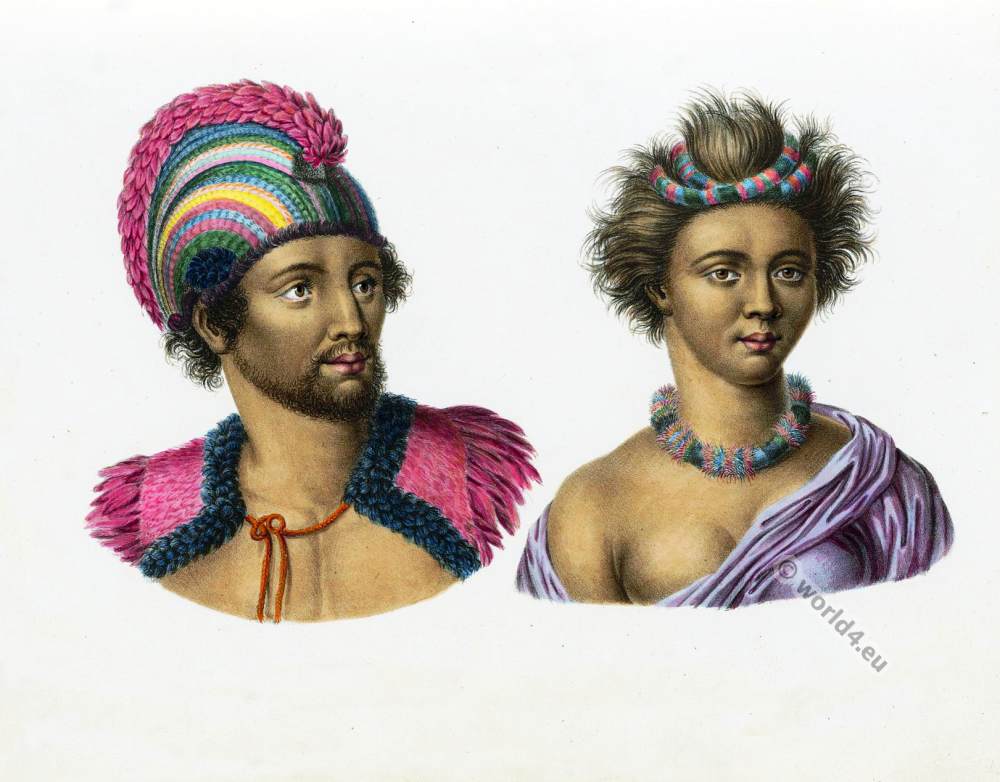Inside of a house in the Radack Islands.
Polynesia. Island nation of the Marshall Islands.
The Ratak Chain is an island chain in the East of the territory of the Marshall Islands. Dating from the Micronesian language word Ratak means “Sunrise” (Eastern). Many of the atolls forming islets are uninhabited.
The first European Spanish explorer Alonso de Salazar reached in 1526 the islands, in 1529 it reached the Spanish navigator Alvaro de Saavedra. However, the Spaniards made no further claims to the islands claimed so they went unnoticed for two centuries by Europeans until the English captain John Marshall visited 1788. After him the islands were named later. At the beginning of the 19th century they were first mapped by the Baltic German explorer Otto von Kotzebue, officer of the Russian navy.
Source: A Voyage of Discovery, into the South Sea and Beering’s Straits, for the purpose of exploring a North-East Passage undertaken in the years 1815-1818. At the expense of his Highness the chancellor of the Empire, Count Romanzoff, in the ship Rurick under the command of the Lieutenant in the Russian Imperial Navy, Otto von Kotzebue. Printed for Longman, Hurst, Rees, Orme, and Brown Paternoster-Row. London 1821.
Related:
[sitecreator show=”18″]
- Suisse costumes nationaux
- Traditional French national costumes.
- Tyrolean national costumes 1835.
- Souvenir de L’Exposition Universelle de Vienne.
- Costumes of Japan and Java.
- The Peninsula war. Character, Costume in Portugal and Spain.
- Our islands and their people. Hawaii, Philippines, Puerto Rico, Cuba.
- Costumes of all countries by Alexandre Lacauchie 1850s.
- Historical and folk costumes by Franz Lipperheide.
- The costume of Turkey. Ottoman Empire 18th century.
- Traditional Dutch national costumes.
- The Switzerland national costumes of 17th ‚18th, 19th century originals.
- Folk dresses from Norway, Dutch, Germany and Hungaria.
- Mexico by Carl Nebel 1836.
- Typical pictures of Indian Natives.
- The People of India
- Views of Darjeeling: With typical native portraits and groups.
- History of the Indian Tribes of North America of the Indian Tribes of North America
- Chinese sceneries in 19th century. by Thomas Allom.
- Provincial Russia. Costume and Culture.
- Costume of the Russian empire by Edward Harding.
- Serbian national costumes by Vladimir Kirin.
- Historical European costumes by Auguste Wahlen.
- The Highlanders of Scotland, 1870.
- Costumes and scenery of Afghanistan.
- Views of Darjeeling: With typical native portraits and groups.
- The dark continent. Africa, the landscape and the people 1931.
- Historical costumes from Africa, America and Oceania.
- Traditional folk costumes of Italy and France in 1821.
- The Serbs in the Adriatic. Their types and costumes 1870-1878.
Discover more from World4 Costume Culture History
Subscribe to get the latest posts sent to your email.

